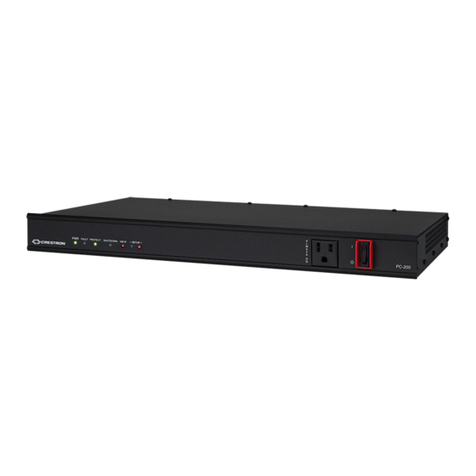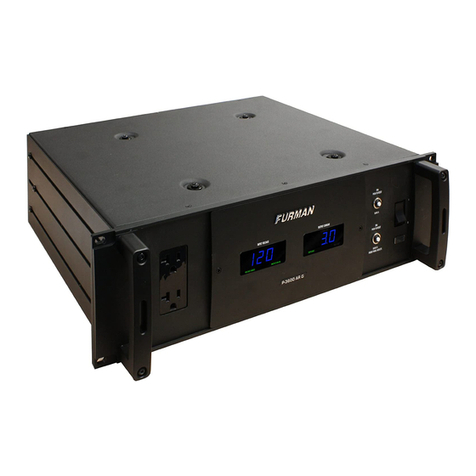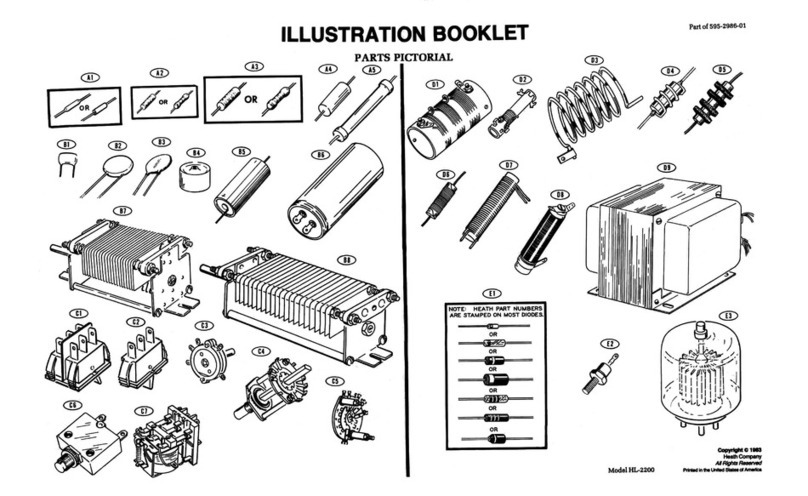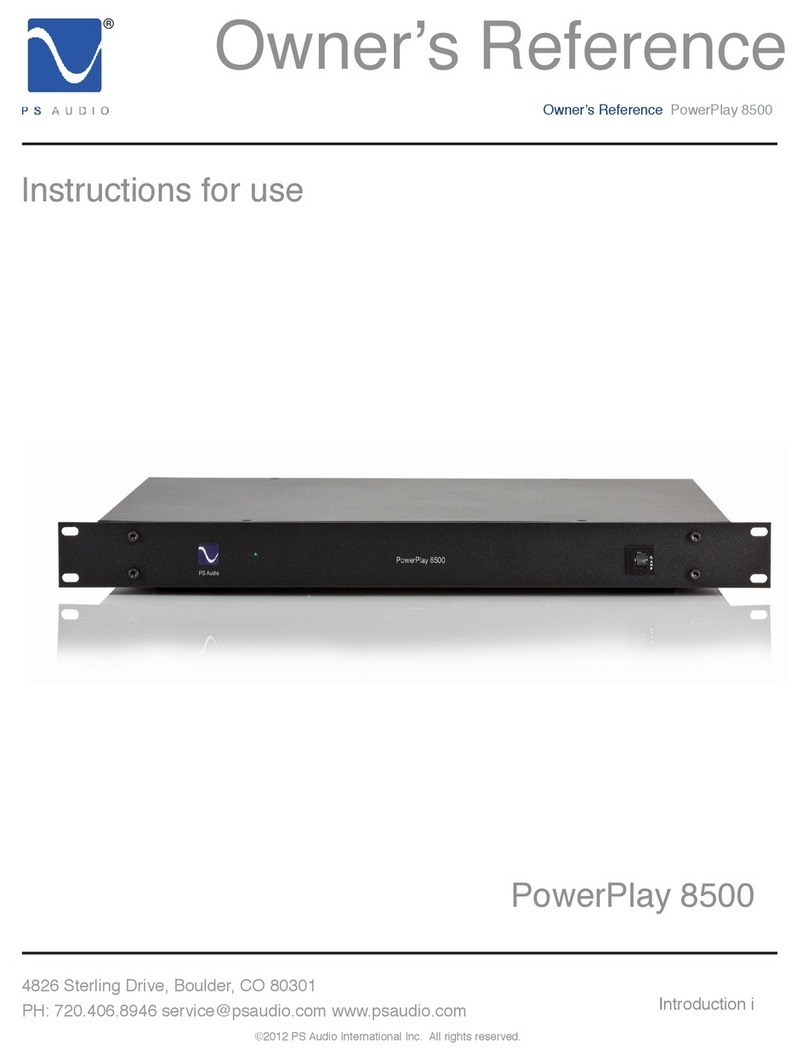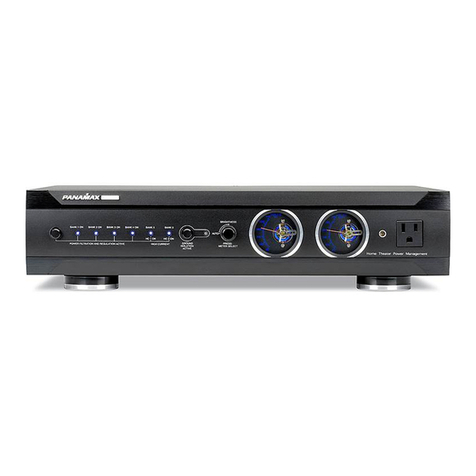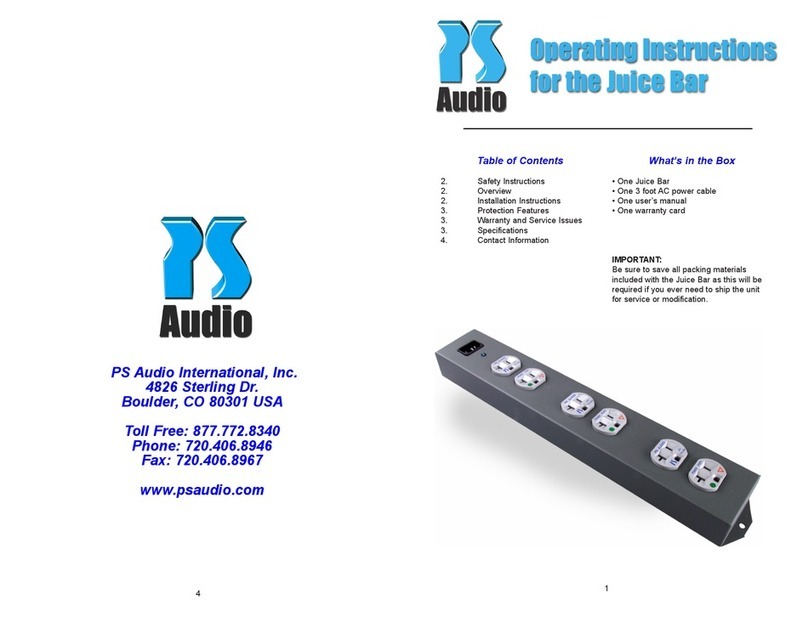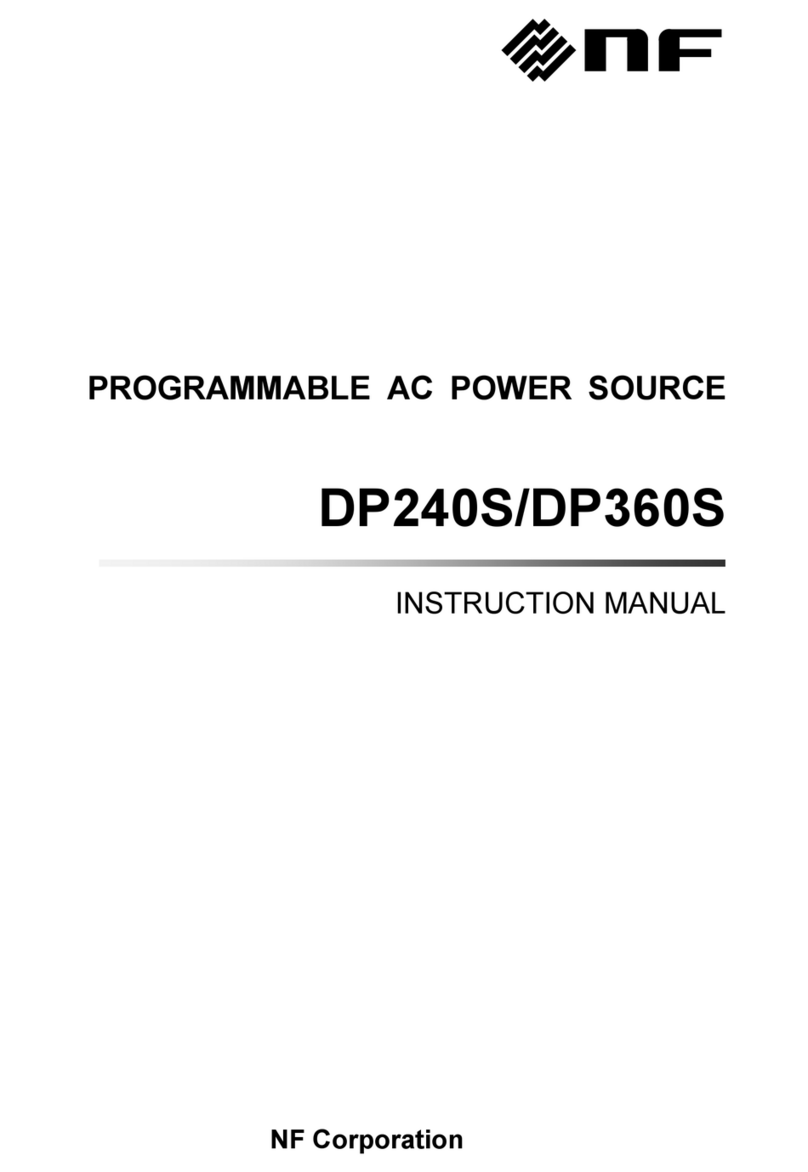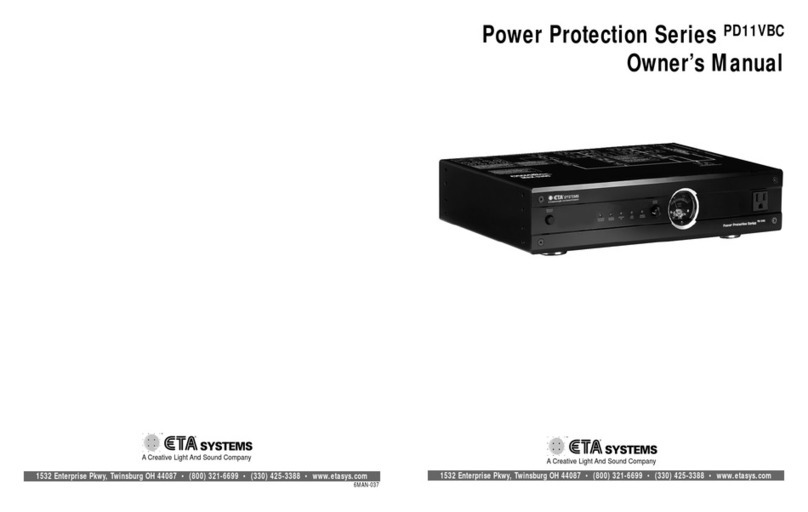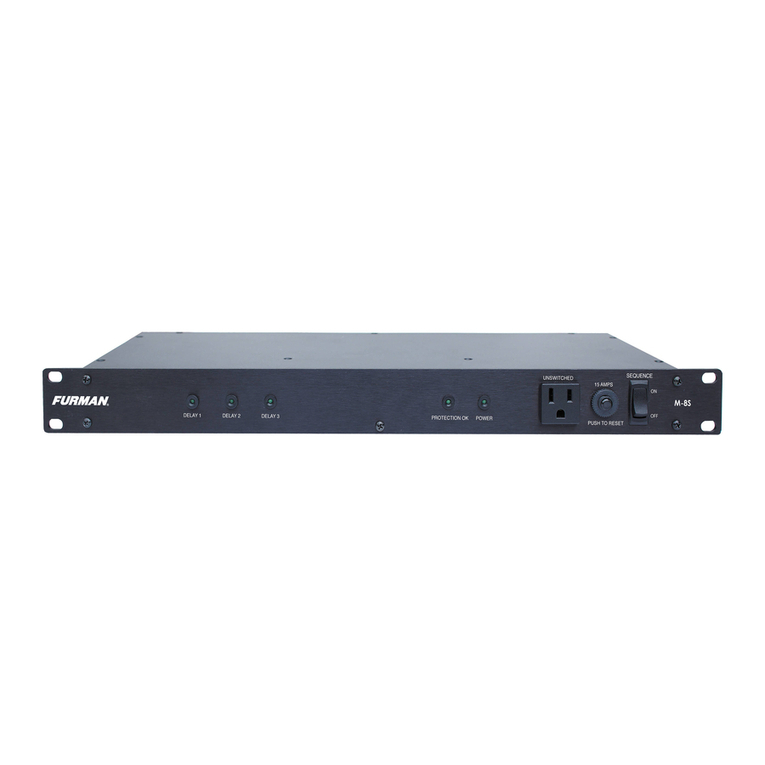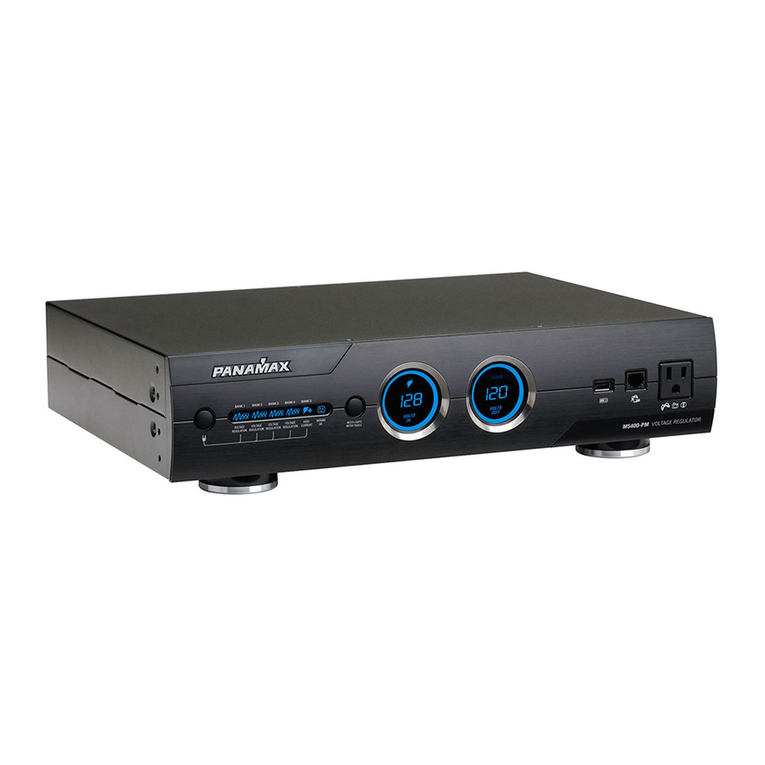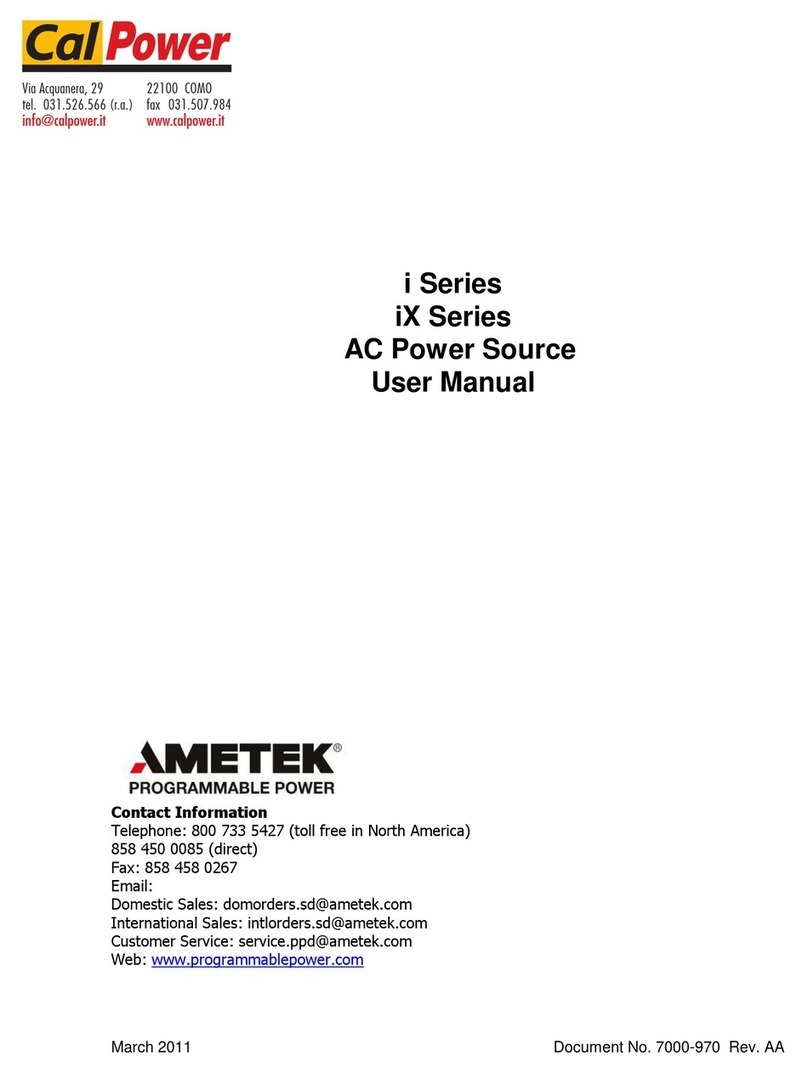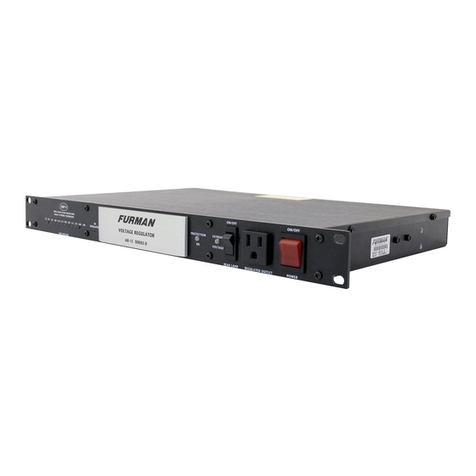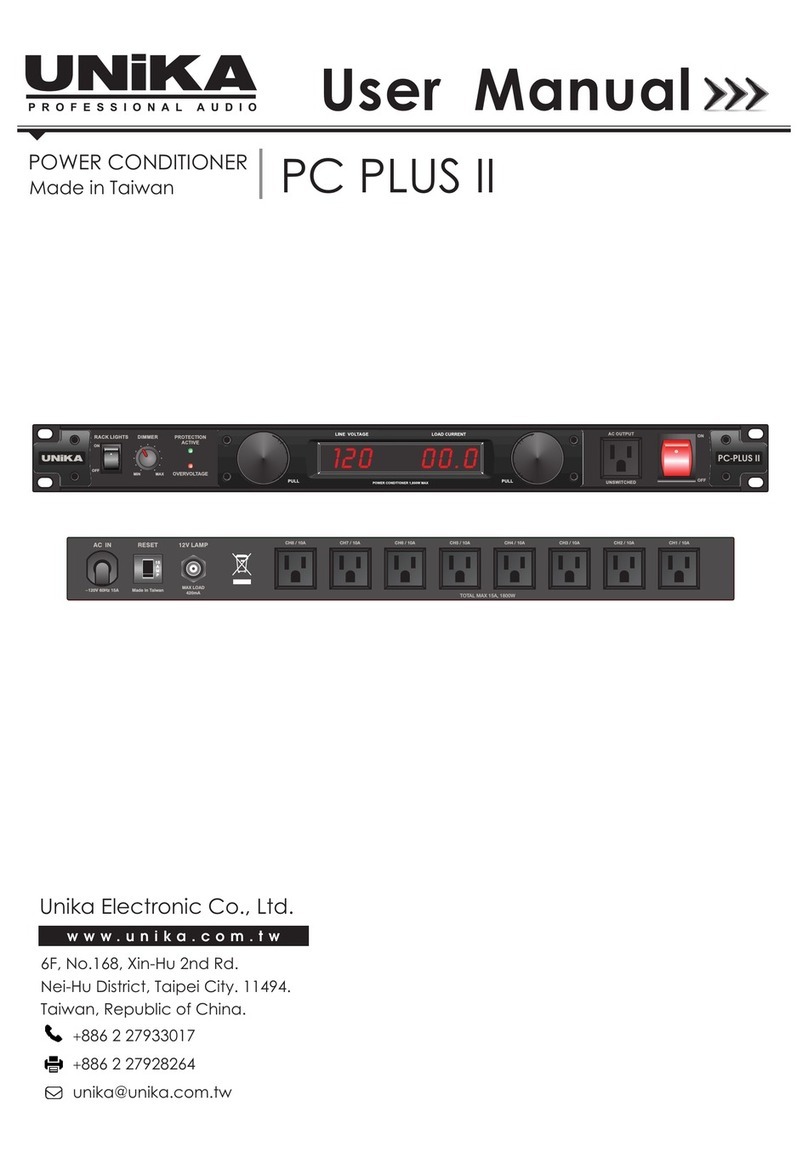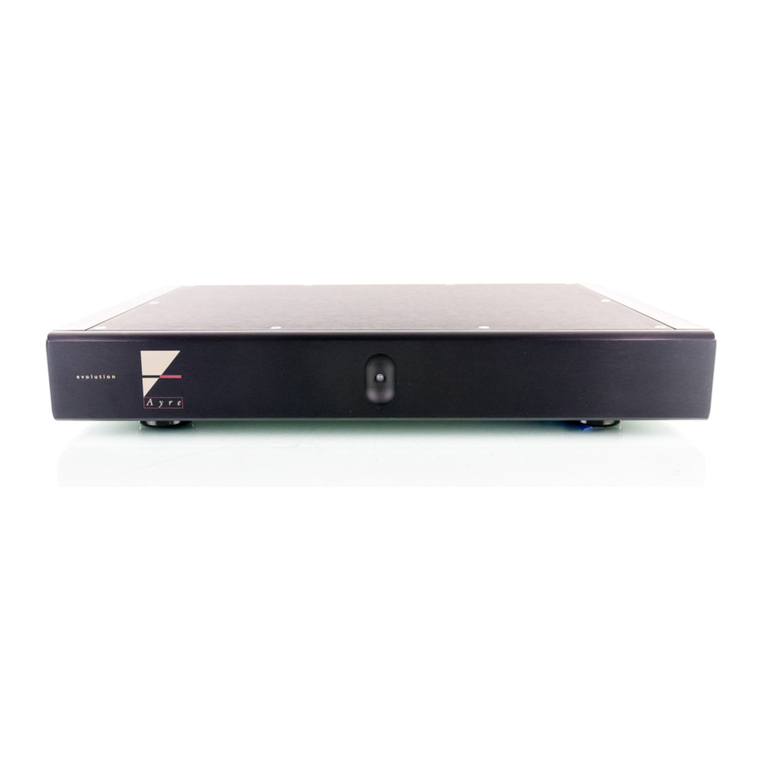DayTronic IL78A User manual

The Model IL78A is a single-channel conditioner of phase-sensitive carrier-amplifier design.
Intended for applications involving transformer-coupling to the transducer bridge (as with rotary-
transformer torque sensors), this conditioner can also be used in conventional installations when
high sensitivity is required or where the electrical environment is especially noisy. Responding
only to the modulated carrier frequency, the IL78A rejects extraneous voltages that can cause
errors in DC systems, particularly when there is a need to “blow up” a portion of the transducer
range. User-adjustable phase and symmetry controls are provided.
1GENERAL DESCRIPTION AND SPECIFICATIONS
IN-LINE AC Strain Gage Conditioner
MODEL IL78A
AC Strain Gage
CONDITIONERModule
IL78A
GENERAL DESCRIPTION AND SPECIFICATIONS IL78A.1
Top View of the Model IL78A AC Strain Gage Module (cover removed)
AC Strain Gage Phase Operation
Due to the AC modulated aspects of the IL78A AC Voltage excitation circuit, the IL78A8 contains a "PHASE"
adjustment which aligns the transducer's return output signal to the conditioner's demodulator. When the
demodulator is aligned properly through calibration, maximum amplitude and linearity are achieved.
The Model IL78A's is calibrated by means of a “two-point (dead-weight)” or shunt-calibration
technique, which are outlined in section three. The user can utilize the shunt calibration method
by adding the correct leaded shunt resistor value from "Cal Sense" to either + Sense or - Sense
depending on the polarity desired.
Shunt Operation: Located between the two screw terminal connectors, t
he IL70A contains a Shunt resistor jumper
selection. "EXT" is for an external - user installed shunt or "INT" for the internal - built in - 59K Ohm shunt. Installing the jumper
enables the selected feature. For an external shunt resistor, install the leaded resistor between the "Cal Sense" (pin 7) terminal
and either the + Signal (pin 5) or the - Signal (pin 6) terminals. Use the SW4 "Shunt" button to engage the shunt resistor across
the selected side of the bridge or "SHP or "SHN" logic input lines. For transducers with an installed shunt resistor, place the
jumper on the "EXT" teminals and wire the "Cal Sense" line to the transducer's shunt connector pin.
92371.00 rev. B

WARNING
Death, serious injury, orfire hazard could result from improper connection of this instrument. Read and understand this
manual before connecting this instrument. Follow allinstallation andoperating instructions while using this instrument.
Connection of this instrument must be performed in compliance with the National Electrical Code (ANSI/NFPA 70-2014) of
USA and any additional safety requirements applicable toyour installation.
Installation, operation, and maintenance ofthis instrument must be performed by qualified personnel only. The National
Electrical Code defines a qualified person as “one who hasdemonstrated the skills and knowledge related to theconstruction
and operation of the electrical equipment and installations, and who hasreceived safety training on the hazards involved.”
Qualified personnel who work on or near exposed energized electrical conductors must follow applicable safety related
work practices and procedures including appropriate personal protective equipment incompliance with the Standard for
Electrical Safety Requirements forEmployee Workplaces (ANSI/NFPA 70E-2012)of USA andanyadditional workplace safety
requirements applicable toyour installation.
ADVERTENCIA
Una conexión incorrecta de este instrumento puede producir lamuerte, lesiones graves y riesgo de incendio. Lea y entienda
este manual antes de conectar. Observe todas las instrucciones de instalación y operación durante elusode este
instrumento.
La conexión deeste instrumento a unsistema eléctrico se debe realizar enconformidad conelCódigo Eléctrico Nacional
(ANSI/NFPA 70-2014)de los E.E.U.U., además de cualquier otra norma de seguridad correspondiente a su
establecimiento.
La instalación, operación y mantenimiento de este instrumento debe ser realizada por personal calificado solamente. El
Código Eléctrico Nacional define a una persona calificada como "una que esté familiarizada con la construcción y operación del
equipo y con los riesgos involucrados."
El personal cualificado que trabaja encendido o acerca a los conductores eléctricos energizados expuestos debe seguir
prácticas y procedimientos relacionados seguridad aplicable deltrabajo incluyendo elequipo protector personal apropiado
en conformidad con elestándar para los requisitos deseguridad eléctricos para los lugares de trabajo del empleado (ANSI/
NFPA 70E-2012)de los E.E.U.U. y cualquier requisito de seguridad adicional dellugar de trabajo aplicable a suinstalación.
AVERTISSEMENT
Si l'instrument est mal connecté, lamort, desblessures graves, ou un danger d'incendie peuvent s'en suivre. Lisez
attentivement cemanuel avant de connecter l'instrument. Lorsque vous utilisez l'instrument, suivez toutes les
instructions d'installation etdeservice.
Cet instrument doit être connecté conformément auNational Electrical Code (ANSI/NFPA 70-2014)des Etats-Unis et à
toutes les exigences desécurité applicables à votre installation.
Cet instrument doit être installé, utilisé et entretenu uniquement par un personnel qualifié. Selon le National Electrical
Code, une personne est qualifiée si "elle connaît bien la construction et l'utilisation de l'équipement, ainsi que les dangers
que cela implique".
Le personnel qualifié qui travaillent dessus ou s'approchent desconducteurs électriques activés exposés doit suivre des
pratiques en matière et des procédures reliées par sûreté applicable de travail comprenant le matériel de protection
personnel approprié conformément à lanorme pour desconditions de sûreté électriques pour les lieux de travail des
employés (ANSI/NFPA 70E-2012)des Etats-Unis ettoutes les conditions de sûreté additionnelles de lieu de travail
applicables à votre installation.

WARNUNG
Der falsche Anschluß dieses Gerätes kann Tod, schwere Verletzungen oder Feuer verursachen. Bevor Sie dieses Instrument
anschließen, müssen Sie dieAnleitung lesen und verstanden haben. Bei derVerwendung dieses Instruments müssen alle
Installation- und Betriebsanweisungen beachtet werden.
Der Anschluß dieses Instruments muß in Übereinstimmung mit den nationalen Bestimmungen für Elektrizität (ANSI/NFPA
70- 2014)der Vereinigten Staaten, sowie allen weiteren, inIhrem Fall anwendbaren Sicherheitsbestimmungen, vorgenommen
werden.
Installation, Betrieb und Wartung dieses Instruments dürfen nur von Fachpersonal durchgeführt werden. In dem nationalen
Bestimmungen fürElektrizität wird einFachmann als eine Person bezeichnet, welche "mit der Bauweise und dem Betrieb des
Gerätes sowie den dazugehörigen Gefahren vertraut ist."
Qualifiziertes Personal, das anbearbeiten oder herausgestellte angezogene elektrische Leiter sich nähern, mußanwendbare
Sicherheit bezogener Arbeit Praxis und Verfahren einschließlich passende persönliche schützende Ausrüstung gemäß dem
Standard für elektrische Sicherheitsauflagen für Angestellt-Arbeitsplätze (ANSI/NFPA 70E-2012)derVereinigten Staaten
und alle zusätzlichen Arbeitsplatzsicherheitsauflagen folgen, dieauf Ihre Installation anwendbar sind.
Safety Precautions
The following safety precautions must be followed whenever any type of voltage or current connection is being made to the
instrument.
oBefore connecting to electric circuits or pulse initiating equipment, open their related breakers or disconnects. It is
recommended NOT TO install any connection of the instrument on live power lines. Only Qualified Service personnel that
have demonstrated the abilities and received the proper safety training are capable of connecting to live circuits.
oConnections must be made to the instrument first, then connect to the circuit to be monitored.
oWear proper personal protective equipment, including safety glasses and insulated gloves when making connections to
power circuits.
oHands, shoes and floor must be dry when making any connection to a power line.
oBefore each use, inspect all cables for breaks or cracks in the insulation. Replace immediately if defective.
oIf the equipment is used in a manner not specified in this user’s guide, the protection provided by the equipment may be
impaired.

Medidas de seguridad
Las medidas de seguridad siguientes deberán observarse cuando serealice cualquier tipo de conexión al instrumento.
οCuando se haga conexiones a circuitos eléctricos o a equipo de activación por pulso, deberá abrirse sus respectivas cajas
de seguridad. NO deberá hacerse ninguna conexión del instrumento en líneas eléctricas bajo tensión.
οLas conexiones deberán hacerse primero al instrumento y, luego, al circuito a ser monitorizado.
οAl hacerconexiones a circuitos eléctricos, deberá utilizar anteojos y guantes protectores.
οSus manos, zapatos y elpiso deberán estar secos entodo momento en que sehaga una conexión a un cable eléctrico.
οVerifique que launidad esté DESACTIVADA antes de conectar sondas en el panel posterior.
οPrevio a cada uso, deberá verificarse que los cables no estén rotos y que elmaterial aislante no tenga rajaduras.
Reemplace de inmediato cualquier parte defectuosa.
Mesures de Sécurité
Les mesures de sécurité suivantes doivent être prises chaque fois qu’un type de connexion quelconque est effectué
sur l’instrument.
οOuvrir les disjoncteurs correspondants lors d’une connexion à descircuits électriques ou à deséquipement de génération
d’impulsions. NE PAS effectuer de connexion d’instrument sur deslignes électriques sous tension.
οUne fois toutes les connexions de l’instrument effectuées, connecter aucircuit à contrôler.
οPorter deslunettes de protection et desgants isolants pour effectuer desconnexions aux circuits électriques.
οS’assurerque les mains, les chaussures et le sol soient secs lors de connexions à une ligne électrique.
οS’assurer que l’unité est ÉTEINTE avant de connecter les sondes au panneau arrière.
οInspecter tous les câbles, avant chaque utilisation, pour s’assurer que les isolants ne sont pascoupés ou fendus.
Remplacer immédiatement tous les équipements défectueux.

Sicherheitsvorkehrungen
Die folgenden Sicherheitsvorkehrungen sind immer dann zu befolgen, wenn eine Verbindung zum Instrument hergestellt wird.
οÖffnen Sie beim Anschluß an elektrische Stromkreise oder Impulsauslösungseinrichtungen die entsprechenden
Unterbrecher. Es dürfen KEINE Anschlüsse an das Instrument unter stromführenden Spannungsleitungen montiert
werden.
οDie Verbindungen müssen zuerst am Instrument und danach an der zu überwachenden Schaltung hergestellt werden.
οTragen Sie Schutzbrillen und Isolierhandschuhe, wenn Sie Anschlüsse an den Stromkreisen vornehmen.
οHände, Schuhe und Fußboden müssen trocken sein, wenn Sie Anschlüsse an den Stromkreisen durchführen.
οStellen Sie sicher, daß das Gerät AUSgeschaltet ist, bevor Sie an der rückwärtigen Konsole Meßfühler anschließen.
οPrüfen Sie vor jedem Gebrauch alle Kabel auf Bruchstellen und Risse in der Isolierung. Wechseln Sie schadhafte Kabel
sofort aus.
Standard Accessories
Standard
accessories The following table lists the IL & ILA standard accessories.
Description Part Number
Manual & Operating instruction Resource CD

IL78A SPECIFICATIONS
Measurement Range:Adjustable 0.5 mV/V to 5.0 mV/V; nominal full-scale
Excitation: 3.28 kHz; Nominal 2.77 Vac rms, sensed
Transducer Types: Conventional 4-arm strain gage bridges, typically transformer
Amplifier
Normal - Mode Range : ±1.5 Vrms operating; ± 8V without instrument damage
Input Impedance : Differential > 10 MΩ
Offset : vs. Temperature: ±30 ppm µV/°C; vs. Time: ±10 ppm/month
Filter:3-pole modified Butterworth; 3 dB down at 10 Hz, 100 Hz or 650 Hz; selectable
Step-Response Settling Time (Full-Scale Output @ 10 Hz
:)
To 1% of final value: 0.08 sec; (0.008 sec @ 100 Hz) (0.0011 sec @ 650 Hz)
To 0.1% of final value: 0.095 sec; (0.0095 sec @ 100 Hz) (0.0016 sec @ 650 Hz)
To 0.02% of final value: 0.10 sec; (0.01 sec @ 100 Hz) (0.0014 sec @ 650 Hz)
coupled - 120 to 10 k ohm
Analog Ouput: selectable; ± 0 to 5, ± 0 to 10 Vdc, 4-12-20 or 4-20mA (20% over-range, voltage only)
Power Supply : 11 - 28 Vdc regulated; 100 mAmax.
Operating Temperature : -10 to +70 Degrees C, 5 to 95% relative humidity, non-condensing
Dimensions
Gain Accuracy: Limited only by calibration accuracy
Gain Stability: vs. Temperature: ±30 ppm/°C; vs. Time: ±10 ppm/month
Linearity: better than ± 0.03% of full scale
GENERAL DESCRIPTION AND SPECIFICATIONS IL78A.1
AC Strain Gage Conditioner Module IL78A

2TRANSDUCER CONNECTIONS
The Model IL78A I/O CONNECTIONS are via non-removable screw terminals which will accept wire
sizes from AWG 16 to 30. NOTE: The recommended transducer cabling would be eight wire,
individually shielded, twisted pair - wired as indicated (Fig. 1) Sense lines must be connected at the
transducer (as recommended) or at the IL78A screw terminals - as a minimum. Table 2 denotes
screw terminal assignments
TRANSDUCER CONNECTIONS IL78A.2
AC Strain Gage Conditioner Module IL78A
Fig. 1 Model IL78A Transducer Cabling
Table 2 Model IL78A Pin Assignments
I/O Connector Conditioner
Terminal LineScrew
Terminal Label Function
1
2
3
4
5
6
7
8
Analog Output
SHP
SHN
Sync
Analog Common
Power Common
+ 24 Vdc
Shield
+ Signal Output
Shunt positive switch input
Shunt negative swithc input
Master / Slave Sync I/O
- Signal Output
Power Supply Common
11 - 28 Vdc Input Power
Earth ground
1
2
3
4
5
6
7
8
+Excitation
+ Sense
- Excitation
- Sense
+ Signal
- Signal
Cal Sense
Shield
+ Sensor Power
+ Sensor Power Sense
- Sensor Power
- Sensor Power Sense
+ Signal from Sensor
- Signal from Sensor
Calibration Shunt Sense
Earth ground
J1
J2
7 Wire confirguration (recommended)
4 twisted pair, shielded wire be used.
Paired as follows:
+ & - Excitation
+ & - Sense
+ & - Signal
Cal Sense and unused wire
Shield at the instrument only
4 Wire confirguration
2 twisted pair, shielded wire be used.
Paired as follows:
+ & - Excitation
+ & - Signal
Shield at the instument only
Sense lines must be connected at the
instrument

Fig. 2 Master / Slave Wiring
When more than one IL78A is being used in the same measurment setup, beat frequencies can be produced by
the excitation clock oscillator. To prevent this, the user should declare one of the IL78A units as a Master via
switch 6 on the front panel. The other units should be switched to Slave and wired as shown with the SYC
terminals connected and a separate Power Common wire. If the units share a common power supply, the
Power com terminal should be connected at the modules.
Shunt Resistor Selection
The IL78A has a Internal and External shunt
selection jumper located between the two wiring
connectors. Below are the appropriate wiring and
jumper selections depending on the application
using the recommended 7 wire configuration.
TRANSDUCER CONNECTIONS IL78A.2
AC Strain Gage Conditioner Module IL78A

Fig. 4 Remote Shunt Activation Connections
TRANSDUCER CONNECTIONS IL78A.2
AC Strain Gage Conditioner Module IL78A

3 GENERAL DESCRIPTION AND CALIBRATION
The Model IL78A is useful in applications involving tranformer coupling to the strain gage bridge (for example,
rotary transformer torque sensors) and in certain appications that require high sensitivity with optimum signal-to-
noise characteristics. Carrier amplifiers offer higher sensitivity than dc amplifiers and, since they respond only to
the modulated carrier frequency, they reject certain extraneous voltages that can cause error in dc systems. These
error sources include thermocouple or galvanic voltages in the cable-connector system, homopolar voltages from
rotating machinery, low-frequency pickup, and 1/f noises of various origin.
Calibration of the IL78A is accomplished by the conventional shunt technique, using an internally (or
externally) installed calibration resistor, or via the "dead-weight" method.
Calibration Resistor. If a fixed resistor is shunted across one arm of a strain gage bridge, it produces an unbalance
equivalent to that of a particular value of mechanical input. If this Equivalent Input value is accurately known, it can
be used as a reference point for shunt calibration of the system. Upon completion of installation of the transducer
and its associated cabling, the user can:
Perform an overall dead weight calibration using a precisely known value
of mechanical input. The calibration can then be transferred to the installed
calibration resistor for convenience in subsequent checking.
Install an external calibration resistor with one (or an equivalent resistance value)
supplied by the transducer manufacturer to achieve a precisely known Equivalent
Input allowing the instrument sensitivity to be adjusted correctly. Move jumper
from INT to the ETX terminals, install resistor between Cal Sense and + or - Signal.
Determine the Equivalent Input value for the installed calibration resistor (59K),
knowing the transducer sensitivity, and adjust the instrument sensitivity accordingly.
Jumper to be in the INT location.
A one percent 59-kilohm calibration resistor is installed in the IL78A at the factory. The installed
resistor can usually be used even though the transducer calibration data mentions some
other resistance value. In Section 4 of this manual, the techniques described above are
demonstrated. If, however, the installed value of the calibration resistor is not appropriate
for the transducer and measurement range to be used, the 59-kilohm resistor should be
disabled by placing the Shunt jumper in the "EXT" position and an external shunt resistor
should be used.
Note: A variety of Rotary Transformer Torque Transducers are supplied with the appropriate
calibration resistor integral to the transducer. When this type of transducer is used it will be
necessary to move the Shunt jumper to the EXT position and connect the CAL Sense wire
to the shunt activation pin of the transducer. Refer to Fig 1 cabling diagram section of this
manual in the area of CAL SENSE.
7
(1)
(2)
(3)
Calibration IL78A.3
AC Strain Gage Conditioner Module IL78A

3.CALIBRATION (cont.)
This section contains the instructions for calibrating the IL78A. Included is a functional description of
the instrument front-panel (see Figure 2). To perform calibration, proceed as follows.
Turn power ON to the IL78A DC Power input terminal (11 to 28 Vdc input) The
front-panel indicator should light green to indicate the application of dc power.
Allow 10 minutes of warmup for stabilization of transducer characteristics.
Remove the top cover of the unit to make the proper connections and adjustments.
Set the Coarse Zero control to position 8 and the Coarse Span control to position 0.
Position the front panel switches to the desired settings for the application. Refer
to Figure 2 for details. If using Shunt method, refer to step (k).
(b)
(a)
(c)
the Coarse and Fine SPAN controls. If not, adjust the Symmetry control
to obtain the negative Equivalent Input value.
If dead weight calibration is not practical and the transducer calibration
data is unknown, the Equivalent Input value for the factory-installed
calibration resistor can be approximated
mv/v sensitivity rating of the transducer
known.
as follows, assuming that
and the bridge resistance
the
are
13
(m)
With the transducer unloaded, adjust the Coarse Zero control and the Fine Zero control until
the desired analog output is achieved. If greater zero authority is desired, place the front panel
Switch 7 - "Zero Adj" to the extended range. This will allow the user to obtain 100% zero offset
control. The Normal postion of switch 7 allows for approximately 25% Zero authority.
(d)
the Coarse and Fine SPAN controls. If not, adjust the Symmetry control
to obtain the negative Equivalent Input value.
If dead weight calibration is not practical and the transducer calibration
data is unknown, the Equivalent Input value for the factory-installed
calibration resistor can be approximated
mv/v sensitivity rating of the transducer
known.
as follows, assuming that
and the bridge resistance
the
are
13
(m)
Load the transducer in the positive direction with a convenient dead weight value (greater than one
half of full scale). Adjust Coarse Span for a nominal corresponding output. Adjust the PHASE control,
until a maximum output value is obtained. (Once set for your transducer, this PHASE ADJUSTMENT
step need not be repeated unless a change in cable length – or transducer – is required). Unload the
sensor and re-Zero as needed.
(e)
(f) If the calibration will utilized a known "dead-weight", re-load the sensor and adjust the Coarse and
Fine Span controls for the expected analog output value. Unload - Zero and Load - Span operations
may need to be repeated for analog output precision.
Note: With sensor unloaded, activate & record "SHP" value for furture calibration verification.
If the calibration will utilize the "Shunt" calibration method, refer to step (k).
recommended calibration resistor.
the Coarse and Fine SPAN controls. If not, adjust the Symmetry control
to obtain the negative Equivalent Input value.
If dead weight calibration is not practical and the transducer calibration
data is unknown, the Equivalent Input value for the factory-installed
calibration resistor can be approximated
mv/v sensitivity rating of the transducer
known.
as follows, assuming that
and the bridge resistance
the
are
13
(g)
(m)
the Coarse and Fine SPAN controls. If not, adjust the Symmetry control
to obtain the negative Equivalent Input value.
If dead weight calibration is not practical and the transducer calibration
data is unknown, the Equivalent Input value for the factory-installed
calibration resistor can be approximated
mv/v sensitivity rating of the transducer
known.
as follows, assuming that
and the bridge resistance
the
are
13
(m) the Coarse and Fine SPAN controls. If not, adjust the Symmetry control
to obtain the negative Equivalent Input value.
If dead weight calibration is not practical and the transducer calibration
data is unknown, the Equivalent Input value for the factory-installed
calibration resistor can be approximated
mv/v sensitivity rating of the transducer
known.
as follows, assuming that
and the bridge resistance
the
are
13
(m)
If the transducer is to be also used in the negative realm, load the transducer in
the negative direction with the same dead weight value as used in step (f) and confirm
that the dead weight reading obtained is the same, but negative polarity, as that of step
(f). If not, see steps (i) thru (j).
A Symmetry adjustment is provided to compensate for transducers that do not have
symmetrical sensitivity characteristics. This adjustment is factory set assuming
symmetrical characteristics. If step (h) indicates that a field adjustment is necessary,
proceed as follows.
recommended calibration resistor.
the Coarse and Fine SPAN controls. If not, adjust the Symmetry control
to obtain the negative Equivalent Input value.
If dead weight calibration is not practical and the transducer calibration
data is unknown, the Equivalent Input value for the factory-installed
calibration resistor can be approximated
mv/v sensitivity rating of the transducer
known.
as follows, assuming that
and the bridge resistance
the
are
13
(h)
(i)
(m)
Calibration IL78A.3
AC Strain Gage Conditioner Module IL78A

With the transducer loaded as in step (f), adjust the Symmetry control (right above the PHASE
control adjustment) to obtain a dead weight reading equal to that obtained in step (f).
If dead weight calibration is not practical and the transducer manufacturer has supplied a
calibration resistor (or resistor value), install the recommended calibration resistor. See
Fig. 5
(j)
(k)
Perfom steps (b) thru (e). Now activate the SHUNT POSITIVE (SHP) terminal
and adjust the SPAN controls until the instrument output is equal to the Equivalent Input
value simulated by the installed resistor. Shunt is performed at zero load.
If a negative Equivalent Input value is also provided on the calibration sheet of the transducer
under calibration, activate the SHUNT NEGATIVE (SHN) terminal. Confirm that the negative
value can also be obtained. If necessary, adust the SYMMETRY control to obtain the negative
Equivalent Input value as listed on the calibration document. The SYMMETRY control has
approximately 7% authority, full scale.
If dead weight calibration is not practical and the transducer calibration data is unknown,
the Equivalent Input value for the factory-installed calibration resistor can be
approximated as follows, assuming that the mv/v sensitivity rating of the transducer
and the bridge resistance are known.
(l)
(m)
where X=Equivalent Input, % of full scale
R
b=bridge resistance, ohms
K =transducer sensitivity, mV/Vfull scale
R
c=calibration resistance, ohms (59 kinstalled)
Sample Calculation: Assume that K = 3.000 mV/V for a 5000-pound load cell
(fullscale) with a bridge resistance of 350 ohms.
49.4% of full scale =2472 pounds
X = 25000 Rb
K Rc
X = 59000 x 3
25000 x 350 =
ring, one unit can be designated the master, and the remaining units can be driven
from the oscillator contained in the master unit. The remaining units are designated
as slave instruments. To perform master/slave wiring, refer to Figure 4.
3. CALIBRATION (cont.)
Note: Above calculation is useful in applications involving non - star bridge shunt calibration strain gage bridges (for
example DC bridges, and slip ring type torque sensors). Rotary transformer type sensors which use star bridge shunt
circuit will not equate properly and the sensor's published calibration data should be referenced.
Calibration IL78A.3
AC Strain Gage Conditioner Module IL78A

b
c
Remote Calibration Check: The instrument can be placed in the calibration mode (positive or negative) by
shorting terminals Power Common and SHP for positive or SHN for negative on the lower I/O connector.
Figure 4 indicates two methods of remotely entering the calibration mode (external switch, or push
button control). The Remote Cal function provides a convenient method of periodically monitoring
calibration of the instrument in the positive or negative realm.
Master/Slave Connections. : When more than one IL78A is being used in a measurement setup
(instruments are closely mounted or the transducer cabling is in a common conduit or raceway),
beat frequencies may be produced from the 3-kHz oscillators used in the instruments to develop the
excitation. To prevent beat frequencies from occur-ring, one unit can be designated the master, and
the remaining units can be driven from the oscillator contained in the master unit. The remaining
units are designated as slave instruments. To perform master/slave wiring, refer to Figure 7.
3. CALIBRATION (cont.)
Switch 1 - Mode - current (I) or voltage analog output
Switch 2 - Volts - +/- 5 or +/- 10 Vdc when mode is voltage
Switch 3 - Current - 4-12-20 or 4-20mA when mode is current
Switch 4 - Filter - 650 Hz or 100 Hz at 3 db, for 100 Hz switch 5 must be set down
Switch 5 - Filter - 10 Hz or 100 Hz at 3 db, for 100 Hz switch 4 must be set down
Switch 6 - Sync - excitaton clock to slave from a master module or to be master
Switch 7 - Zero Adj. - extended (100%) or normal (25%) zero authority
Switch 8 - Aux Output - SYC terminal output for use by other modules
Coarse Zero - 16 position switch adjustment for stepped zero
balance control marked for calibration default position
Fine Zero - 18 turn potentiometer for fine zero balance control
Coarse Span - 16 position switch adjustment for stepped gain
contr ol marked for calibration default position
Fine Span - 18 turn potentiometer for fine gain - span control
Symmetry - adjust the negative output span to be equal
to the positive output
Phase - adjustment for phasing the AC modulated signal to its
highest level at load
Over Range - indicates when the analog output is 2% greater
than mode selected
Power - indicates the power input voltage is ON
Fig. 2 Front Panel Settings and Indicators
Calibration IL78A.3
AC Strain Gage Conditioner Module IL78A

4. VERIFICATION OF NORMAL OPERATION
It is the purpose of this section to aid the user in determining, in the event of a malfunction
to which the Model IL78A is suspected of contributing, whether the instrument is
functioning normally or whether it is the source of the observed trouble. In the
event the unit requires repair, the user may also contact the factory Service
Department or the local Daytronic Representative for assistance. Daytronic service
information is located on the last page of this document.
If the instrument is suspected of faulty operation, follow the steps below.
(a) If the unit is totally inoperational (front-panel power indicator does not light),
check the primary power input terminals for proper connection. Input power can
be from 11 to 28 Vdc and will draw less than 2 watts. If properly connected,
the front panel Green LED will be illuminated. Before reapplying power, visually
inspect the power supply and the input power connections for any discrepancy
which could have caused the overload.
(b) If the transducer has some preloading, the BALANCE controls may not allow
successful zeroing of the instrument output. This condition can be remedied by
connecting a resistor (50 k- 200 k range, metal-film type) from the +Signal
terminal of the transducer to the + or –Excitation Sense terminals. The Excitation
terminal to which the connection is made is determined by the direction of the
loading or off-zero reading.
(c)
I<
Figure 7. Star Bridge Construction
20
The inability to balance correctly, where the instrument output readstotally off scale
and the BALANCE controls have no authority, can very likely be the result of a
damaged or defective transducer or cable. This possibility can be confirmed (or
eliminated) by substituting a transducer and cable known to be in good condition
or by simulating a balanced transducer, using either a commercially available
transducer simulator or the simple star bridge arrangement shown in Figure 7. The
star bridge simulates a conventional four-arm bridge in an exact condition of
balance. To construct a star bridge, connect four 10% carbon resistors as shown
in Figure 5. Use 180-ohm resistors to simulate a 350-ohm bridge and use 56-ohm
resistors to simulate a 120-ohm bridge. Neither the resistor values nor
temperature characteristics are critical since the balance condition of a star
bridge is not determined by the resistance values. Solder two resistors together,
then solder the remaining two resistors together. Next, connect the two
junctions together using a separate wire as shown. There is a good reason
for this method of construction, and it should be followed. Connect the substitute
or simulated transducer to the instrument I/O connector using a short 4-wire cable
configuration as shown in Figure 4. Attempt to balance the substitute-simulated
transducer. If conditions now appear to be normal, the transducer or cable is at
fault. If the previous difficulties persist, the IL78A is faulty.
Verification of Operation IL78A.3
AC Strain Gage Conditioner Module IL78A

Fig. 4 Star Bridge
AC Strain Gage Conditioner Module IL78A

Daytronic CorporationDayton OH USA
wwwwww..ddaayyttrroonniicc..ccoomm
Product Warranty and Repair
Daytronic Corporation warrants its products to be free from defects in material and
workmanship, under normal and proper use in accordance with our instructions,
for the period of time specified below. Our liability under such warranty or in
connection with any other claim relating to the products shall be limited to, at our
option, the repair or replacement of any products or parts or components thereof
which are returned to us freight prepaid and which are defective in material or
workmanship or the refund of the purchase price to the Buyer.
Before returning a product or products for any reason, the
customer must call Daytronic Customer Support Services at
ALL EQUIPMENT TO BE REPAIRED OR REPLACED UNDER WARRANTY MUST BE
RETURNED TO THE FACTORY.
. Once the customer has provided the
necessary information and has been assigned a specific RMA, the product(s) in question
may be returned to Daytronic by shipping it
Daytronic Corp. , 1000 New Durham Road, Edison, New Jersey 08818
ANY PRODUCT FOUND TO BE DAMAGED THROUGH CUSTOMER NEGLIGENCE OR MIS-
USE MAY BE EXCLUDED FROM ANY AND ALL POLICIES CONTAINED IN THIS DOCUMENT.
(937) 866-3300 to request a
RETURN MATERIAL AUTHORIZATION (RMA)
AC Strain Gage Conditioner Module IL78A
Table of contents
